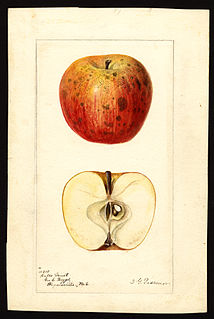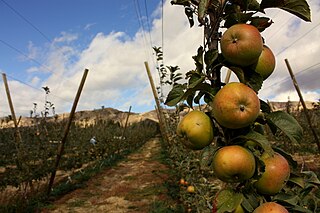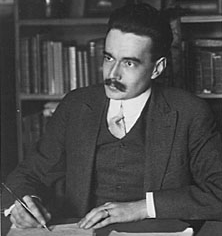Related Research Articles

Thomas Jefferson was an American statesman, diplomat, lawyer, architect, philosopher, and Founding Father who served as the third president of the United States from 1801 to 1809. He had previously served as the second vice president of the United States between 1797 and 1801. The principal author of the Declaration of Independence, Jefferson was a proponent of democracy, republicanism, and individual rights, motivating American colonists to break from the Kingdom of Great Britain and form a new nation; he produced formative documents and decisions at both the state and national levels.

Monticello was the primary plantation of Thomas Jefferson, the third president of the United States, who began designing Monticello after inheriting land from his father at age 26. Located just outside Charlottesville, Virginia, in the Piedmont region, the plantation was originally 5,000 acres (20 km2), with Jefferson using the labor of enslaved African people for extensive cultivation of tobacco and mixed crops, later shifting from tobacco cultivation to wheat in response to changing markets. Due to its architectural and historic significance, the property has been designated a National Historic Landmark. In 1987, Monticello and the nearby University of Virginia, also designed by Jefferson, were together designated a UNESCO World Heritage Site. The current nickel, a United States coin, features a depiction of Monticello on its reverse side.

Uriah Phillips Levy was a naval officer, real estate investor, and philanthropist. He was a veteran of the War of 1812 and the first Jewish Commodore of the United States Navy. He was instrumental in helping to end the Navy's practice of flogging, and during his half-century-long service prevailed against the antisemitism he faced among some of his fellow naval officers.

'Ralls Janet' is an apple cultivar that is also known by many other names. It has been used extensively in modern apple breeding, and has several commercially important offspring. It was grown at Monticello by Thomas Jefferson. It has been said that the name derives from Edmond-Charles Genet, a Frenchman who gave cuttings to Thomas Jefferson, who then passed them on to Virginia nurseryman M. Caleb Ralls, but this claim was not made until about 100 years after the apple became known and may not be accurate.

The 'Roxbury Russet' is an apple cultivar, believed to be the oldest apple cultivar bred in the United States, having first been discovered and named in the mid-17th century in the former Town of Roxbury, part of the Massachusetts Bay Colony southwest of Boston. It is known by several other names including 'Boston Russet', 'Putnam Russet', and 'Sylvan Russet'.

Jeffersonian architecture is an American form of Neo-Classicism and/or Neo-Palladianism embodied in the architectural designs of U.S. President and polymath Thomas Jefferson, after whom it is named. These include his home (Monticello), his retreat ,the university he founded, and his designs for the homes of friends and political allies. Over a dozen private homes bearing his personal stamp still stand today. Jefferson's style was popular in the early American period at about the same time that the more mainstream Greek Revival architecture was also coming into vogue (1790s–1830s) with his assistance.

Dudley Mays Hughes was an American politician, farmer and railroad executive.

Thomas Jefferson Randolph of Albemarle County was a Virginia planter, soldier and politician who served multiple terms in the Virginia House of Delegates, as rector of the University of Virginia, and as a colonel in the Confederate army during the American Civil War. The favorite grandson of President Thomas Jefferson helped manage Monticello near the end of his grandfather's life and was executor of his estate, and later also served in the Virginia Constitutional Convention of 1850 and at the Virginia Secession Convention of 1861.

Esopus Spitzenburg or Aesopus Spitzenburgh is a variety of apple. It was discovered early in the 18th century near Esopus, New York and is reputed to have been a favorite apple of Thomas Jefferson, who planted several of the trees at Monticello.

The Newtown Pippin, also known as Albemarle Pippin, is an American apple that originated in the late 17th or early 18th century and is still cultivated on a small scale. At one time, there were two very similar apple cultivars known as the 'Yellow Newtown' and 'Green Newtown', one of which perhaps originated as a sport of the other.
The "Taliaferro", "Robinson" or "Robertson" was a small-sized apple grown at Monticello by Thomas Jefferson. This cultivar appears to be extinct, though some horticulturalists assert that the 'Highland County' cultivar may be related, or even the same cultivar under a different name.
Elizabeth Hemings was an enslaved mixed-race woman in colonial Virginia. With her master, planter John Wayles, she had six children, including Sally Hemings. These children were three-quarters white, and, following the condition of their mother, they were enslaved from birth; they were half-siblings to Wayles's daughter, Martha Jefferson. After Wayles died, the Hemings family and some 120 other slaves were inherited, along with 11,000 acres and £4,000 debt, as part of his estate by his daughter Martha and her husband Thomas Jefferson.

Sidney Fiske Kimball was an American architect, architectural historian and museum director. A pioneer in the field of architectural preservation in the United States, he played a leading part in the restoration of Monticello and Stratford Hall Plantation in Virginia.

Thomas Jefferson, the third president of the United States, owned more than 600 African-American slaves throughout his adult life. Jefferson freed two of his slaves while he lived and seven others after his death. Jefferson consistently spoke out against the international slave trade and outlawed it while he was President. He privately advocated gradual emancipation and colonization of slaves already in the United States, rather than immediate manumission.

The Calville Blanc d'hiver is an apple cultivar. It originated in France in the 17th century from a chance seedling.

The Gardens of Monticello were gardens first designed by Thomas Jefferson for his plantation Monticello near Charlottesville, Virginia. Jefferson's detailed historical accounts of his 5,000 acres provide much information about the ever-changing contents of the gardens. The areas included a flower garden, a fruit orchard, and a vegetable garden. Jefferson, a connoisseur of trees, flowers, and gardening techniques, was highly interested in experimental planting and directed the design of the gardens, which contained many exotic seeds and plants from his travels abroad.

Fountain Hughes was an American former slave freed in 1865 after the American Civil War. Born in Charlottesville, Virginia, he worked as a laborer for most of his life, moving in 1881 from Virginia to Baltimore, Maryland. He was interviewed in June 1949 about his life by the Library of Congress as part of the Federal Writers' Project of former slaves' oral histories. The recorded interview is online through the Library of Congress and the World Digital Library.
'Clarke Pearmain', also called 'Golden Pearmain', 'Glouster Pearmain, 'Yellow Pearmain', and possibly the same as 'Columbian Russet', is a medium-sized apple cultivar. It was grown at Monticello by Thomas Jefferson.

'Detroit Red' is a variable apple cultivar, possibly the same as 'Detroit Black', that gives fruit of mediocre quality, somewhat unreliably or biennially. It was grown at Monticello by Thomas Jefferson.
The Thomas Jefferson Foundation, originally known as the Thomas Jefferson Memorial Foundation, is a private, nonprofit 501(c)3 corporation founded in 1923 to purchase and maintain Monticello, the primary plantation of Thomas Jefferson, the third President of the United States. The Foundation's initial focus was on architectural preservation, with the goal of restoring Monticello as close to its original appearance as possible. It has since grown to include other historic and cultural pursuits and programs such as its Annual Independence Day Celebration and Naturalization Ceremony. It also publishes and provides a center for scholarship on Jefferson and his era.
References
- ↑ Hatch, Peter J. (1998). The Fruits and Fruit Trees of Monticello. United States: University of Virginia. pp. 74–75. ISBN 0-8139-1746-8.

